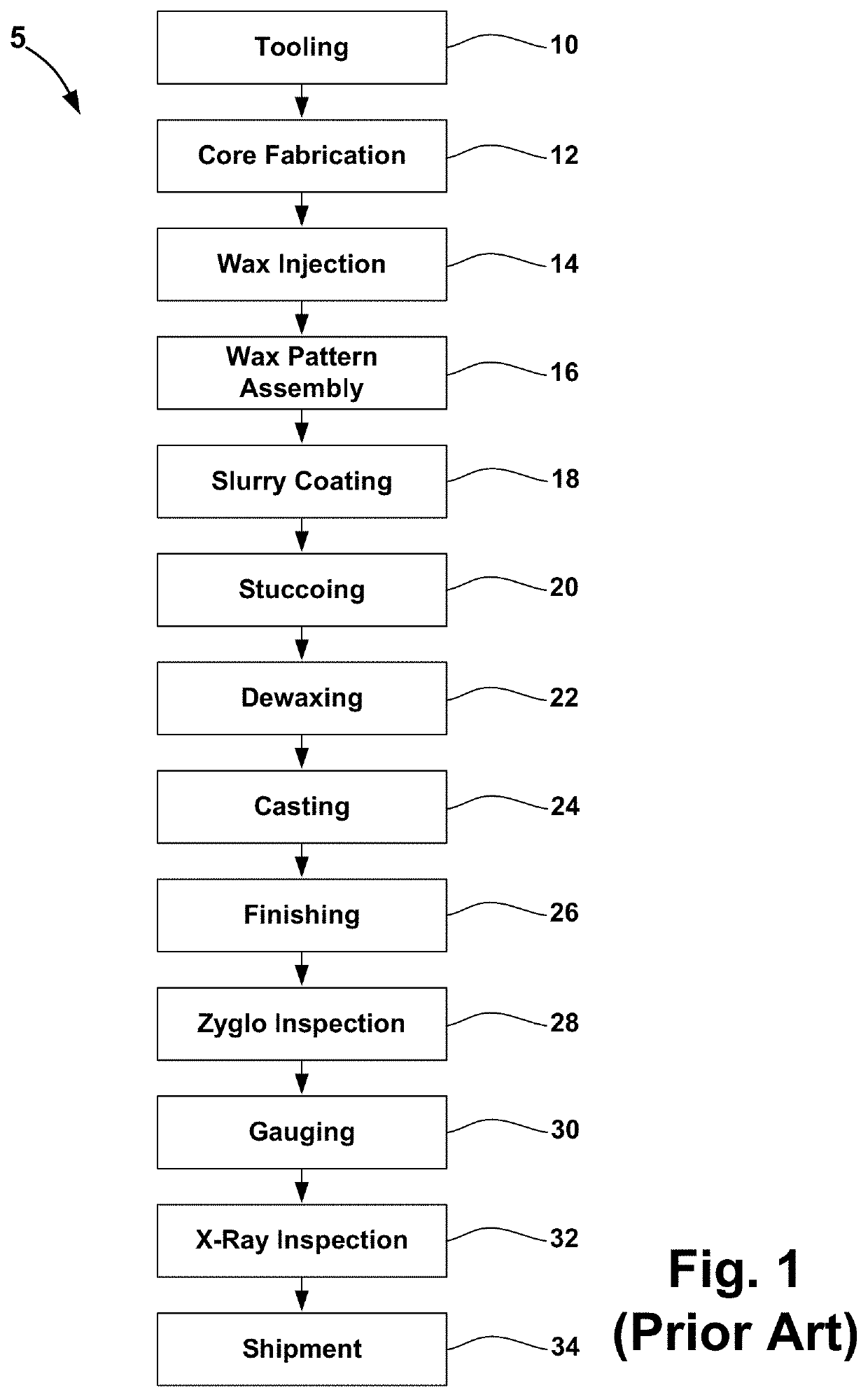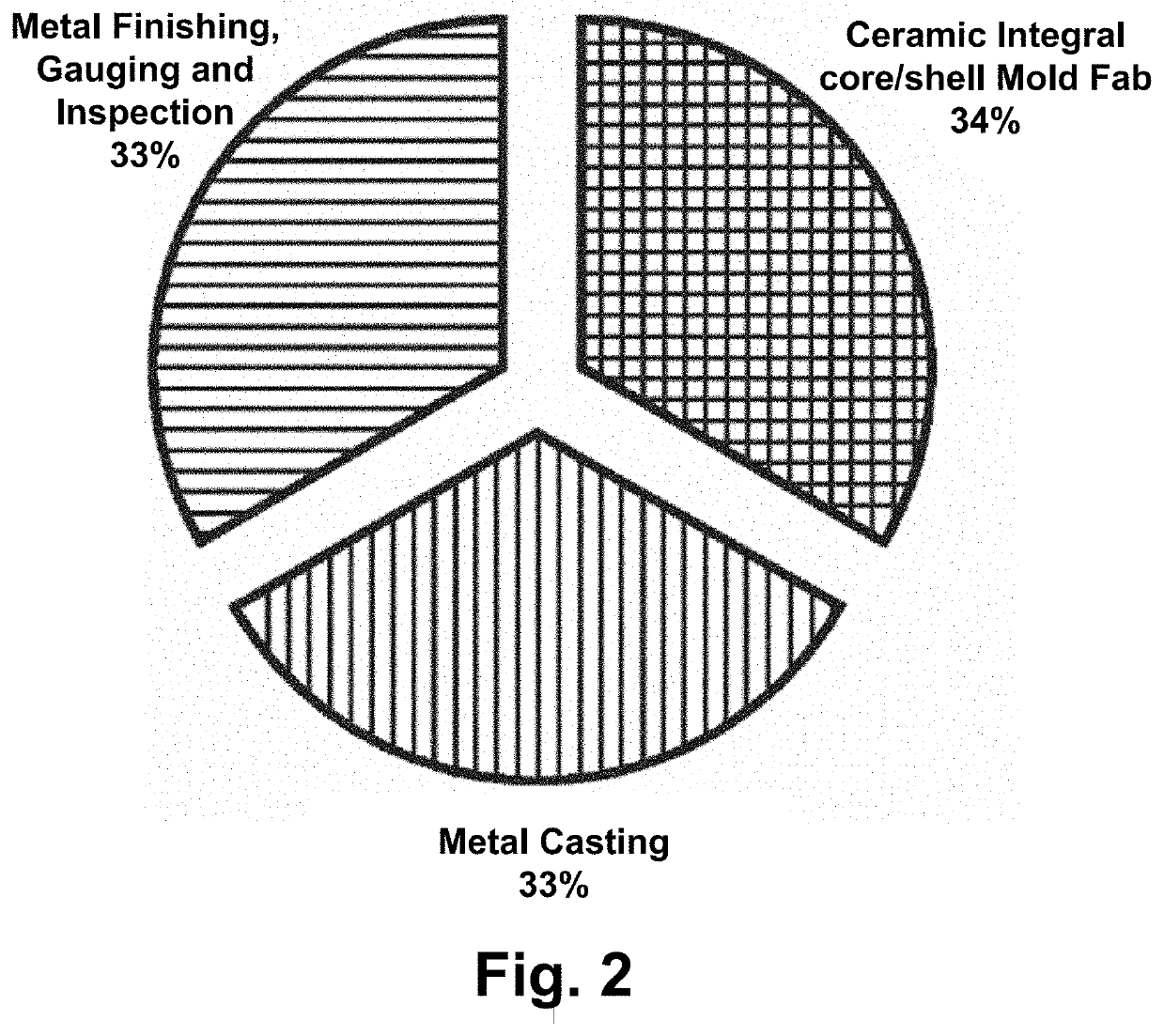Systems And Methods For Fabricating Three-Dimensional Objects
- Summary
- Abstract
- Description
- Claims
- Application Information
AI Technical Summary
Benefits of technology
Problems solved by technology
Method used
Image
Examples
first embodiment
[0250]In a first embodiment, the photocurable ceramic material may be a liquid ceramic resin, based on existing stereolithography resins. Such resins contain approximately 50-60 vol % suspensions of ceramic particles in a low viscosity fluid monomer (non-aqueous acrylate or aqueous methacrylate). Such formulations are understood and have been well characterized in the art. The liquid ceramic resin is locally solidified by photopolymerization where it is exposed to UV light. After the build is complete, the integral cored mold is a solid ceramic-filled photopolymer in a vat of liquid resin. The excess resin drains away after the mold is removed from the vat. The as-cured mold must undergo a binder burnout process (approximately 200° C.-500° C.) to remove the polymer without damaging the mold. Liquid resins, however, have many disadvantages, including: (1) they cure to a “green” build state that is composed of a ceramic in a polymer in the case of acrylate, requiring careful binder py...
second embodiment
[0251]In a second embodiment, the photocurable ceramic material may be a solid ceramic resin including a solid, sublimable monomer solution. This may include a build material that may be applied as a liquid, but one that freezes upon application to form a photopolymerizable solid. For example, this may be accomplished using a monomer in a molecular solid solvent. The solid solvent may be a low-melting vehicle that melts above about approximately 50° C. (e.g., a camphor-camphene alloy). In the molten state, it is a fluid suspension of approximately 50-60 vol % ceramic powder in a low viscosity monomer-vehicle solution. A fresh layer of material may be applied as a warm liquid, which freezes after application creating a solid build material. The frozen solid ceramic resin is locally cross-linked by photopolymerization where it is exposed to UV light. After the build is complete, the integral cored mold is a solid ceramic-filled cross-linked photopolymer in a block of frozen solid resi...
PUM
 Login to view more
Login to view more Abstract
Description
Claims
Application Information
 Login to view more
Login to view more - R&D Engineer
- R&D Manager
- IP Professional
- Industry Leading Data Capabilities
- Powerful AI technology
- Patent DNA Extraction
Browse by: Latest US Patents, China's latest patents, Technical Efficacy Thesaurus, Application Domain, Technology Topic.
© 2024 PatSnap. All rights reserved.Legal|Privacy policy|Modern Slavery Act Transparency Statement|Sitemap



